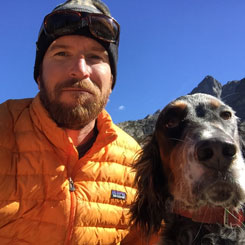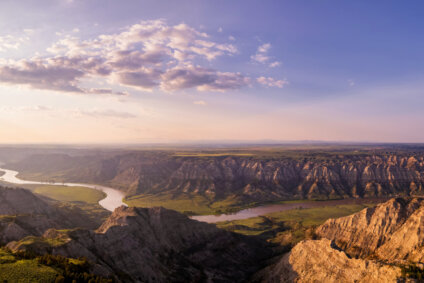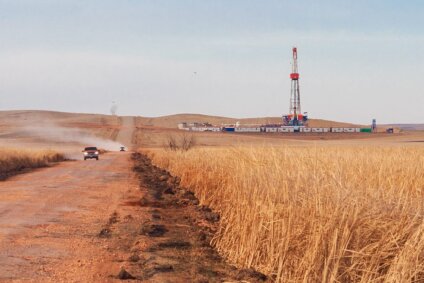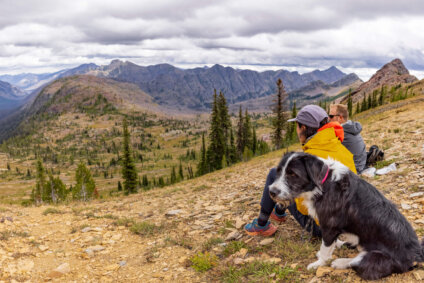We Need Real Solutions, Not More Rhetoric
What we expect from our decision-makers after the 2017 wildfire season
I called a close friend in Missoula this summer to see how he was faring through this year’s fire season. He paused for a minute, then asked me if I recalled how Charlie B’s, a favorite watering hole of ours during college, felt when you could still smoke inside. “Imagine living there day-in day-out,” he said, “but with even thicker smoke, and then make the bar a sauna.”
Others had it worse. Friends in Seeley Lake were forced to evacuate or were under evacuation warning. They spent much of the summer worried about their homes, property, and the safety of their neighbors.
Wildfires burned over one million acres in Montana this year, an area nearly the size of Delaware. Tragically, the fires took the lives of two wildland firefighters, 19-year-old Trenton Johnson and 29-year-old Brent Witham. Communities from the Bitterroot to the Flathead breathed unhealthy, even hazardous air for much of the summer. And this fire season crippled the state’s largest economic driver, our outdoor recreation economy, in many communities during the most profitable time of year.
2017 was the second most expensive fire season on record. At the peak of the season, nearly 28,000 people were fighting wildfires on over 8.5 million acres of land across the nation. So far, the U.S. Forest Service has spent $2.4 billion dollars – a number that is sure to go up. After struggling through another devastating fire season, Montanans deserve solutions that cut through the rhetoric, keep our communities safe, and support proven policies and the agencies that manage our forests.
________________________________________________________________________________
Our recommendation to all decision-makers is to quit pointing fingers, drop the divisive rhetoric, and focus on real measures that we can implement immediately.
________________________________________________________________________________
Extended drought conditions, changing snowpack, past forest management practices, and earlier fire suppression activities have all increased the potential for wildland fire. But ask any old-timer in Montana and they will tell you that our weather is changing. A hotter and drier climate is bringing a longer season and higher number of fires in the Treasure State. Over the last forty years our average temperatures have increased 1.9 degrees while the fire season across the West has jumped from 150 days to 210 days. And since 1980, the number of fires over 1,000 acres in size have nearly doubled from 140 per year to 250.

The 2015 Reynolds Fire in Glacier National Park as it was blowing up, seen from the Badger-Two Medicine (photo by Katie Rogotzke)
Until our nation’s decision-makers accept – and address – human-caused climate change, we will have little chance to alter the trend of longer and more catastrophic fire seasons such as the one Montana experienced in 2017. Harvesting vast tracts of our forests will not prevent fire seasons like this one. As we all saw this summer, when there is enough heat and wind, all forest types will burn no matter how heavily managed.
Our recommendation to all decision-makers is to quit pointing fingers, drop the divisive rhetoric, and focus on real measures that we can implement immediately, knowing that rising temperatures will continue to increase wildfire risk for our communities.
Here are five such measures that we call on all three members of our congressional delegation to work on.
1. Fix fire borrowing
In what is becoming a tradition for secretaries of Agriculture, Secretary Sonny Perdue sent a letter to Congress projecting that the U.S. Forest Service would not have sufficient funding for the remainder of the fiscal year ending September 30. Sec. Perdue notified Congress that he will be transferring $300 million from other funds to pay for firefighting, an amount that may double as bills for the 2017 wildfire season continue to pile up.
Year after year, the pattern of robbing millions from non-fire related funds to foot the bill for another fire season is gutting the agency we rely on to keep our trailheads open, campgrounds clean, and outdoor way of life vibrant. The solution is clear: Congress needs to stop playing political games with wildland fire funding and pass the Wildfire Disaster Funding Act (WDFA).
Twenty years ago, the U.S. Forest Service spent 16% of it’s annual budget on fire fighting costs. With today’s growing longer season and increasing number of wildfires, over half of their budget is consumed by fire – leaving key pieces of the Forest Service’s mission unfulfilled. It’s time we start treating wildfires as the natural disasters they are. Similar to how we pay for hurricanes and floods, WDFA would grant land managers access to disaster funding to protect our lives and property without diverting dollars away from non-firefighting programs.
Senators Tester and Daines both support WDFA, and they should work together to pass it cleanly without additional riders that would needlessly politicize a bi-partisan effort.
2. Adequately fund our public lands and public land managers
Every year we are expecting more from our public land managers, from planning timber sales to protecting communities’ drinking water. At the same time, the Trump administration is proposing draconian cuts to these agencies’ budgets. The president’s proposed budget slashes the budget of the Department of Agriculture, which oversees the Forest Service, by 21%. This budget does more than expect the Forest Service to do more with less, as previous budgets have; this budget would break the agency’s back.
We must restore our land managers’ budgets and ensure they have the resources they need to do their jobs while keeping our communities safe from wildfire. Ultimately, it’s up to Congress to pass a sound budget. As appropriations bills that fund the day-to-day functioning of our government move through Congress this fall, Montanans expect our decision makers to prioritize funding for public safety and sound public lands policy and to stop the political gamesmanship.
3. Advance proven policies and programs that protect our communities
There are proven tools, such as the Collaborative Forest Landscape Restoration Program (CFLRP) and the Forestry Provisions in the 2014 Farm Bill, that empower collaborative efforts underway by Montanans across the state. These programs help restore streams, thin forests, and decrease the risk of fire to rural communities.
_______________________________________________________________________________
Year after year, the pattern of robbing millions from non-fire related funds to foot the bill for another fire season is gutting the agency we rely on to keep our trailheads open, campgrounds clean, and outdoor way of life vibrant.
________________________________________________________________________________
In 2015 and 2016 alone, CFLRP supported 160 restoration jobs in Montana, while treating over 30,000 forest acres, including 12,000 acres of high priority hazardous fuels along the wildland-urban interface. CFLRP will expire in 2019, and the Trump administration’s proposed 2017 budget would eliminate all funding for the job-creating program. We urge Congress to, at a minimum, reauthorize this program at current funding levels.
4. Use the provisions of the 2014 Farm Bill
The 2014 Farm Bill authorized Governor Bullock to nominate 4.95 million acres of national forest land for restoration projects. The Forest Service can now further evaluate these acres for potential projects that increase forest resilience and reduce the risk of insects and disease around the state. But without addressing eroding agency budgets, the Forest Service is unable to take full advantage of the Farm Bill and increase the pace and scale of the restoration projects the bill allows.
5. Work together to pass place-based legislation
We need to acknowledge fire is an important part of our landscape and to address the challenges it poses. A community-based approach to forest management that Senator Jon Tester introduced earlier this year, the Blackfoot Clearwater Stewardship Act (BCSA), does just that by expediting hazardous fuel reduction projects along the wildland-urban interface on the Seeley Lake Ranger District, an area hit particularly hard by wildfire this year.
This bill was crafted by timber interests, outfitters, and recreationists of all stripes to protect our outdoor traditions and accelerate necessary forest projects. Over 74% of Montanans support the bill, and it’s time for Sen. Daines and Congressman Gianforte to get on board with this place-based proposal that will help safeguard our communities from wildfires and protect our backcountry for future generations.
– John Todd, MWA conservation director

Stay Connected
"(Required)" indicates required fields


